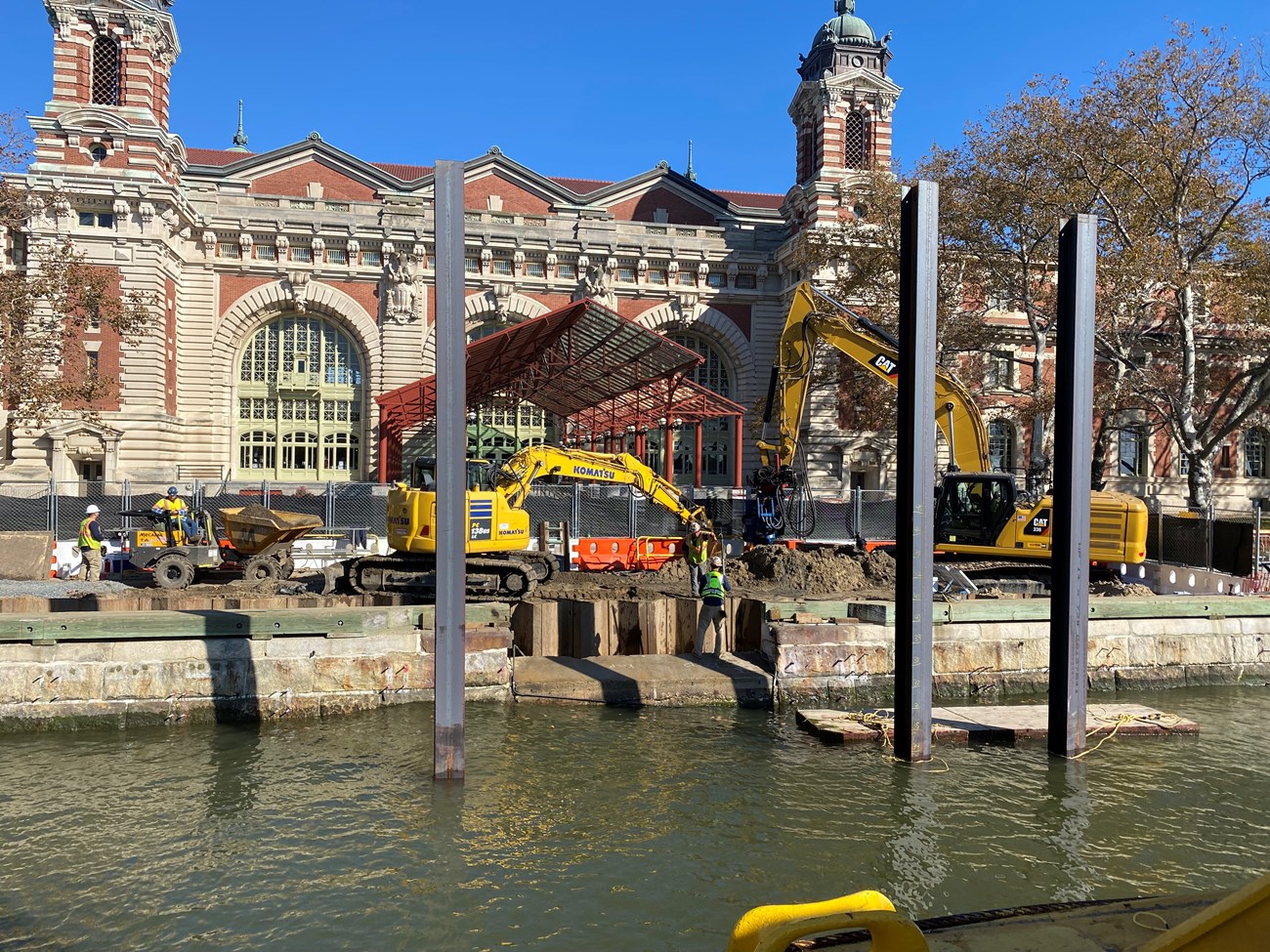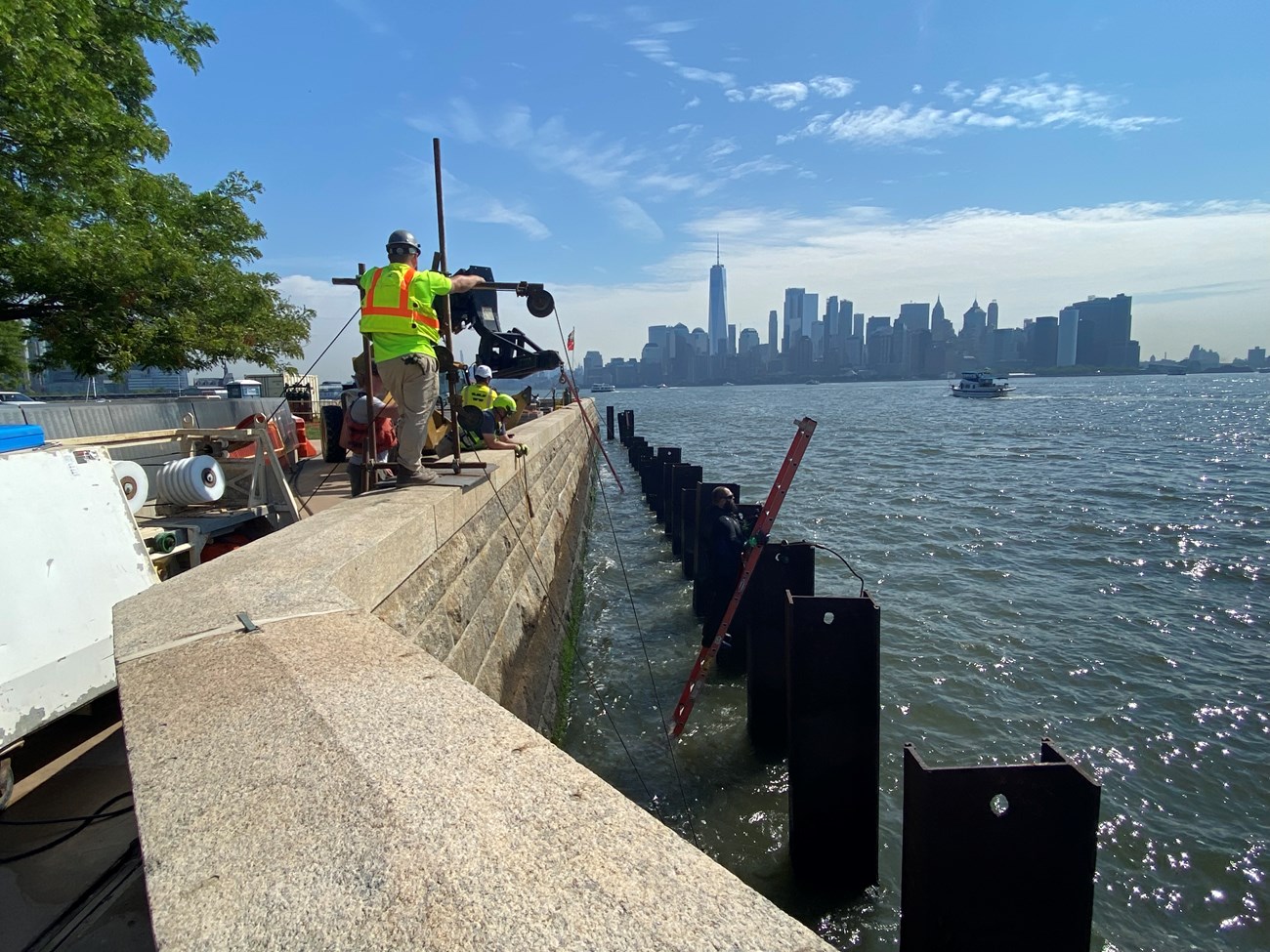Part of a series of articles titled Science, Technology, Engineering, and Mathematics (STEM).
Article
Beyond the Classroom: Your STEM Skills Can Build a Greener Future National Park Service
The Great America Outdoors Act (GAOA) has provided unprecedented funding to the National Park Service (NPS), to tackle big challenges like aging infrastructure and climate change. And guess what? Science, Technology, Engineering and Mathematics (STEM) is at the heart of the solutions of protecting our national parks and preserving them for future generations.

NPS
Saving Our Shores:
Think about the coast – those beautiful beaches and rocky cliffs. They're under attack from rising sea levels and powerful storms. STEM plays a crucial role in the planning and design for rehabilitating shorelines and seawalls to combat coastal erosion and flooding. NPS scientists and engineers are using high-tech tools like sonar and satellite technology to map the underwater terrain, traditional topographic surveys for understanding the complex dynamics of coastal environments. These surveys provide invaluable data on water depth, sediment composition, land, and underwater topography, allowing engineers to design shoreline treatments that can withstand the forces of nature.
Coastal flooding surveys, another critical component of STEM-driven solutions, help assess the vulnerability of coastal areas to rising seas levels and storm surges. By analyzing historical data, tide gauges, and meteorological models, scientists can predict future flooding scenarios and identify areas at highest risk. This information guides the design of shoreline defenses and seawalls that are not only structurally sound but also resilient to the impacts of climate change.
At Colonial National Historical Park, the NPS just finished a GAOA project that stabilized the York River shoreline. This project included restoration of marsh and riverine habitat as well as hardened shoreline that involved increased revetment height, installation of rock sills, and installation of breakwaters. They used a STEM technique called "living shorelines" – basically, rebuilding natural barriers and stabilizing with wetland vegetation to protect the riverbank. By using advanced modeling techniques, the multidisciplined design team, including engineers, can optimize the design of living shorelines to maximize their effectiveness and minimize impacts on the ecosystem.

NPS
More Than Just Coastlines:
STEM is key to all kinds of projects in national parks. Engineers are designing energy-efficient buildings, creating renewable energy systems, and planning sustainable transportation options It's all about using science and technology to make our parks better for both people and the planet.
Your Future in STEM:
If you're passionate about STEM, the NPS needs you! As climate changes, increased visitation, and ever-increasing construction costs continue to pose challenges to our national parks, the NPS will rely on future engineers, scientists, and mathematicians like you to guide its decision-making. By keeping learning, exploring, and applying your STEM skills, you could be the next NPS employee ensuring that our national parks remain protected, vibrant and accessible for generations to come.
Last updated: November 12, 2024
